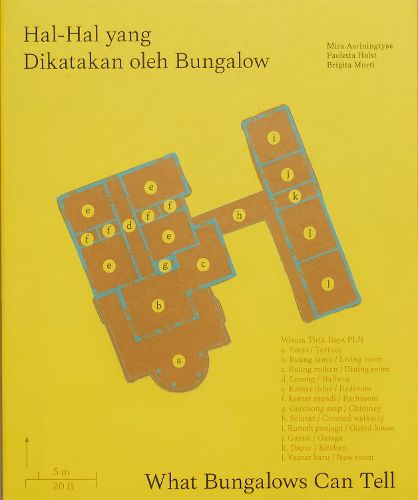Readings Newsletter
Become a Readings Member to make your shopping experience even easier.
Sign in or sign up for free!
You’re not far away from qualifying for FREE standard shipping within Australia
You’ve qualified for FREE standard shipping within Australia
The cart is loading…






On the impact of Dutch colonialism on Indonesian architecture
This book presents new perspectives on Dutch colonial architecture in Indonesia, focusing on the village of Kaliurang (a region of Yogyakarta). What Bungalows Can Tell addresses the conflicts around growing tourism and gentrification processes, and their effects on the quality and continuity of local ways of life, aiming to critically understand the spatial effects of globalization and heritage formation on a local scale. The authors’ research looks specifically at the colonial bungalows of Kaliurang and the stories around them, questioning how they were used in the past, what their function is today and what they can represent in the future. In doing so, this book seeks to take into account the colonial history of the village, while also bringing to the fore the voices, stories and local wisdoms often eclipsed by more prominent forms of Western knowledge production. Tracing a variety of historical and contemporary influences on local architecture–including cosmological symbolism, Javanese mythology and heritage-preserving infrastructure–this publication records an enduring, lively coexistence somewhere between a heritage site and a local neighborhood.
$9.00 standard shipping within Australia
FREE standard shipping within Australia for orders over $100.00
Express & International shipping calculated at checkout
On the impact of Dutch colonialism on Indonesian architecture
This book presents new perspectives on Dutch colonial architecture in Indonesia, focusing on the village of Kaliurang (a region of Yogyakarta). What Bungalows Can Tell addresses the conflicts around growing tourism and gentrification processes, and their effects on the quality and continuity of local ways of life, aiming to critically understand the spatial effects of globalization and heritage formation on a local scale. The authors’ research looks specifically at the colonial bungalows of Kaliurang and the stories around them, questioning how they were used in the past, what their function is today and what they can represent in the future. In doing so, this book seeks to take into account the colonial history of the village, while also bringing to the fore the voices, stories and local wisdoms often eclipsed by more prominent forms of Western knowledge production. Tracing a variety of historical and contemporary influences on local architecture–including cosmological symbolism, Javanese mythology and heritage-preserving infrastructure–this publication records an enduring, lively coexistence somewhere between a heritage site and a local neighborhood.